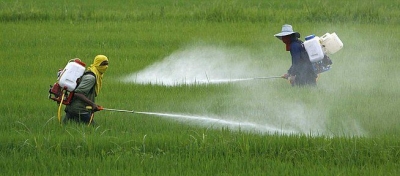
Humans must eat to live, but it shouldn’t be at the cost of the environment. Our food production and consumption impact the planet in multiple ways and that’s why changing the food system should become part of our climate mitigation initiatives, say scientists.
Ensuring everyone in the world has access to a nutritious diet is one of the greatest challenges we face, but what’s equally pertinent is to achieve this in a sustainable way. Food production, transportation, and consumption affect our planet in ways that we cannot ignore.
A new report from the Global Alliance for the Future of Food says that the world urgently needs to change the way it produces, distributes, consumes, and disposes of food to save the planet. The report says that we can reduce greenhouse gas emissions by at least 10.3 billion metric tons a year. That alone would get us 20% of the way to the Paris Climate Agreement’s 2050 goals, it said. Food accounts for over a quarter (26%) of global greenhouse gas emissions. By the time the food you eat gets to your table, much of the environmental impact has already occurred. Here is a look at the ways our food production and consumption practices adversely affect our environment.
Land use and habitat loss
Did you know half of the world’s habitable land is used for agriculture? In a bid to meet our growing food demand, more forest lands have been converted into farm lands. Destruction of forests leave animals and birds in them with no homes to go to and no food to eat. Habitat loss is one of the leading causes of population decline among wildlife species, eventually leading to extinction in many cases. According to data, of the 28.000 species evaluated to be threatened with extinction on the IUCN Red List, agriculture is listed as a threat for 24,000 of them. Deforestation also contributes to global warming and climate change, as forests are major carbon sinks that remove greenhouse gases from the atmosphere.
Use of chemicals for agriculture
Using fertilizers, herbicides, and pesticides impact the environment in two ways: 1) They affect even unintended organisms in the environment. For instance, exposure to neonicotinoid pesticides, which are used against sap-feeding insects such as aphids, has been shown to affect a bee’s ability to navigate. Moreover, the toxic chemicals often end up on our plates. 2) The chemicals from fertilizers are released into the atmosphere, water bodies, and soil as harmful pollutants. These in turn affect all the organisms in a food chain. Pesticides have been shown to cause irreparable genetic damage, or even killing important populations. Agriculture runoffs in water bodies cause algal bloom, which in turn affects marine life.
Stress on water resources
Agricultural production has always been and is increasingly water-demanding. Irrigated agriculture is responsible for 70% of freshwater consumption globally. Rice, soybeans, wheat, and sugarcane are some of the water-intensive crops. Agriculture drains our water reserves at an incredible rate. Livestock animals also require large amounts of water. This puts pressure on already depleted water sources.
Greenhouse gas emissions
*Fossil fuels are used to fuel farm equipment such as tractors and graders. Their usage leads to air pollution. *Livestock and fisheries account for 31% of food emissions. Livestock – animals raised for meat, dairy, eggs and seafood production – contribute to emissions in several ways. Cows produce methane gas as a result of digestion.
* Supply chains account for 18% of food emissions. Food processing, converting produce from the farm into final products, packaging and retail all require energy and resource inputs. Transportation of food is another factor that influences the unsustainability of our food production systems. Where your food comes from also matters. Food that travels from countries far away from India will have a bigger carbon footprint than food grown locally. They use a tremendous amount of fossil fuels.
Food waste
Food is wasted throughout the entire production chain, from initial crop growth, to supermarket screening, to final household. consumption. Food waste includes food scraps, discarded food, and uneaten food. Food waste emissions are large: one-quarter of emissions from food system come from food waste. One third of food produced globally is wasted every year. Disposed of food makes the environment filthy. They end up in landfills, where it rots and produces methane, a greenhouse gas. Did you know 25% of the world’s fresh water supply is used to grow food that is never eaten?
Picture Credit : Google




